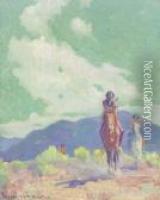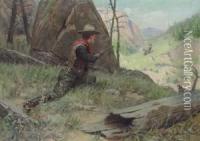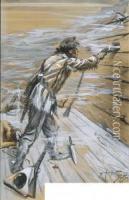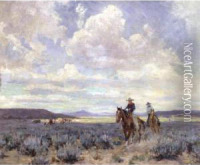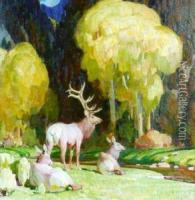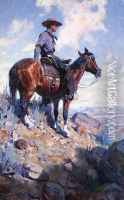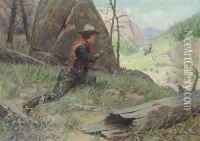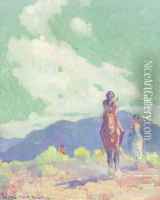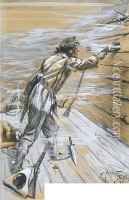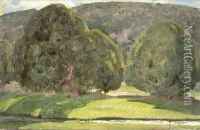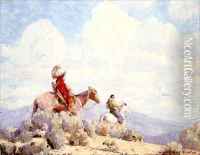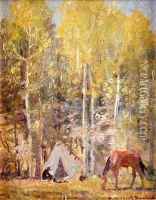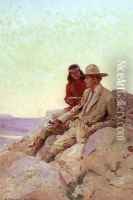W. Herbert Dunton Paintings
William Herbert 'Buck' Dunton was an American artist and illustrator, born on August 28, 1878, in Augusta, Maine. He is best known for his depictions of the American West and was one of the founding members of the Taos Society of Artists in New Mexico. Dunton began his artistic career as an illustrator, working for popular magazines such as Harper's Weekly and The Saturday Evening Post. His work during this period was characterized by detailed pen-and-ink drawings that reflected the dynamic life of the American frontier.
In search of inspiration and a more authentic experience, Dunton moved to Taos, New Mexico, in 1912. There, he immersed himself in the culture and landscapes of the Southwest, which had a profound influence on his work. He became enamored with the idea of the Old West, and his paintings often depicted cowboys, Native Americans, and wildlife in a romanticized, yet realistic manner.
As a member of the Taos Society of Artists, Dunton helped to establish the town of Taos as a hub for American art. His work, along with that of other society members, played a crucial role in bringing national attention to the art and culture of the Southwest. Dunton's paintings were celebrated for their vivid portrayal of the Western spirit and the beauty of the natural world.
Despite his success, Dunton faced personal challenges, including poor health and financial difficulties, which impacted his later life and work. He continued to paint until his death from a heart attack on March 18, 1936. Dunton's legacy lives on through his contributions to American art, and his paintings are held in many prestigious collections, including the Smithsonian American Art Museum and the Gilcrease Museum in Tulsa, Oklahoma.
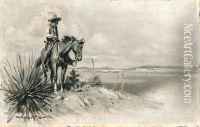
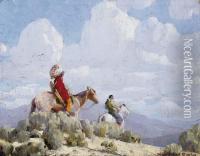
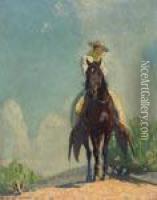
![Study #36 [collie Dog]](https://www.niceartgallery.com/pic/76ab13d8/1286366s.jpg)
